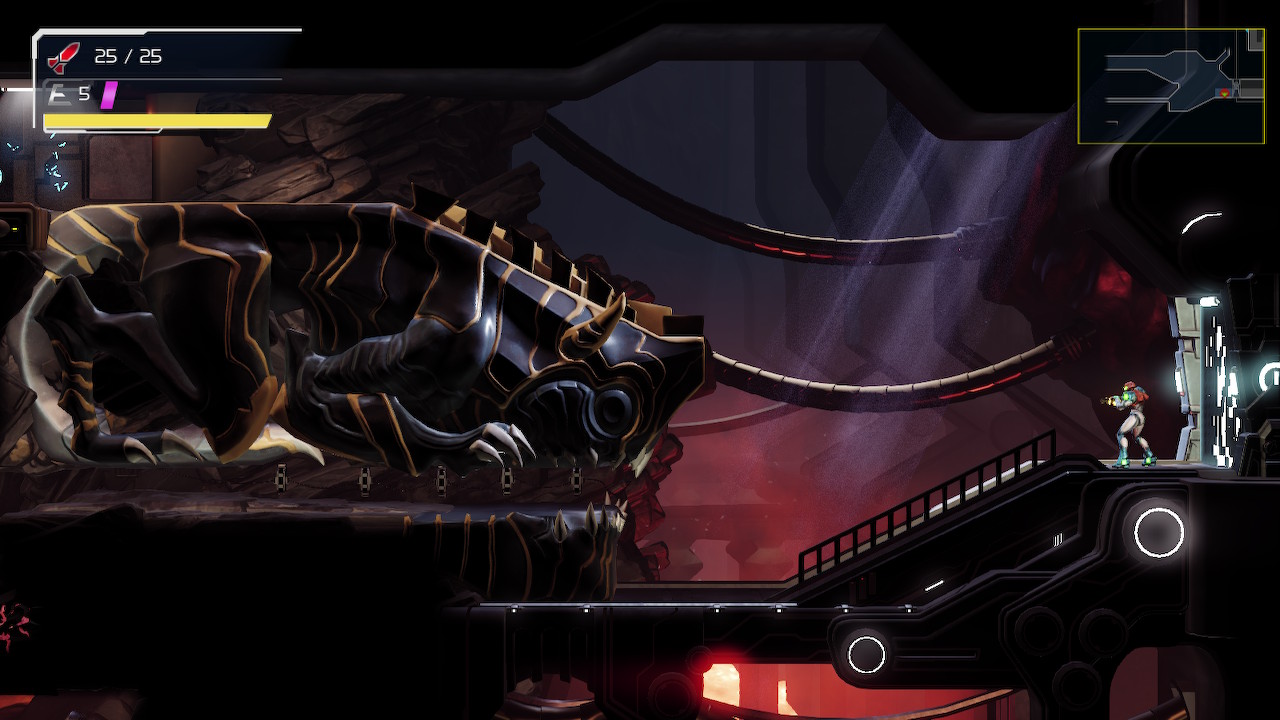Nintendo’s Metroid Dread Blows Out Franchise Sales Figures
After a long period of neglect, Nintendo launched Metroid Dread, a return to the classic side-scroller model for the legendary franchise. Developed by Spanish video game studio MercurySteam, the new installment features bounty hunter Samus Aran awakening in the bowels of a distant planet, stripped of many of her powers and abilities. She must reclaim her weapons and tools as she navigates her way to safety. Complicating matters is the fact that there are areas of the planet patrolled by ruthless, near invincible robots designed to accumulate DNA for sampling, called E.M.M.I., that have self-modified their abilities and turned, essentially, into Terminators seeking to track her down for reasons that are not made clear until later in the game.
The return to the classic format has been a spectacular success. In the United States, a whopping 854,000 units were shipped in October, making it the most successful American Metroid launch. The numbers are equally as impressive from around the globe; e.g., according to one source focused on the Japanese market, Metroid Dread managed to sell so many copies in the first 72 hours that it has already surpassed the entire lifetime unit sales of nearly all other Metroid games in the land of the rising sun. This is creating a lot of hope that it will reinvigorate Nintendo’s commitment to the series.





The economics of the game in the modern era are especially interesting. The original Metroid launched on the NES in the North American market back in 1987 at a list price of $39.95. Meaning, if you were to buy one that Christmas, you would have paid the equivalent of $95.75 in today’s, inflation-adjusted terms. In contrast, Metroid Dread lists for $59.99 and a lot of folks are going to buy it through the Nintendo digital store, meaning that, to some degree, a lower real purchase price is offset by much higher profit margins than were possible in decades past. In addition, the modern Metroid Dread has a stand-alone $29.99 double amiibo pack that 1.) gives the player an extra energy tank plus extra missiles, and 2.) which can be used once every twenty-four hours to partially replenish both energy and missiles. The double amiibo pack can be purchased at retailers such as GameStop and Target.

For Aaron and I, the game has been a welcome addition to our home. We had finally gotten to the point where our life as new parents was easy. Dorian sleeps through the night and is a breeze. As such, things had pretty much returned to normal. However, with Graham in the newborn phase, it feels like we are back at square one (even though we realize we will blink and it will be over before we know it). As a result, we’ve reverted to the division of labor we had back during the early part of the year. As I clear the backlog at Kennon-Green & Co. that accumulated due to Graham’s arrival three weeks ahead of schedule – getting out new client fiduciary agreements, preparing portfolio reviews, and lining up everything for the employees that will be joining us in 2022 to help lighten our burden at the office dramatically – Aaron has been dealing with 3 a.m. feedings and diaper changes. Some nights are great. Other nights, like last night, are not. He gets through it by rocking Graham in one arm and exploring Metroid Dread. I think it’s helped to keep him sane. (That and help from his parents, Grandma and Grandpa Green. I have no idea what we would have done if they hadn’t retired to Newport Beach to be near us and the kids. I’ve said it too many times to count but it remains true: They are an absolute godsend.)




On a side note, this post shouldn’t surprise long-time readers of the blog. You might remember almost a decade ago, when I wrote about one of my favorite games of all time, the then-newly released Castlevania: Lords of Shadow. It, too, was developed by MercurySteam.


